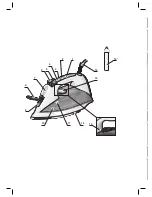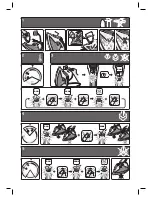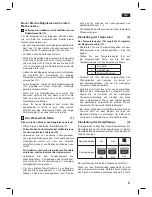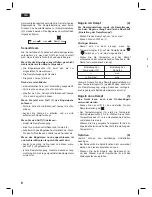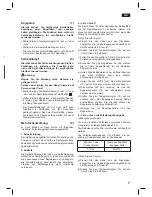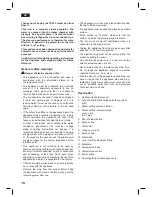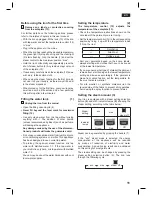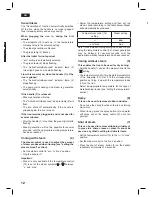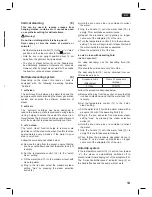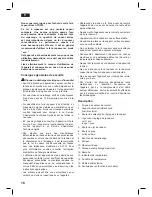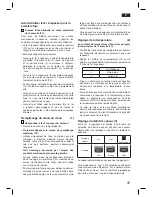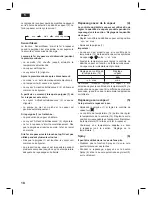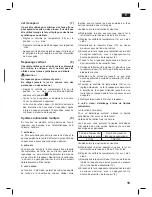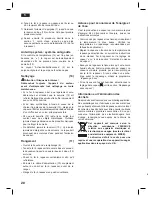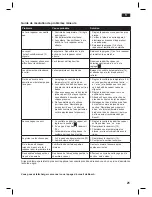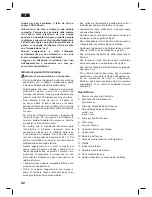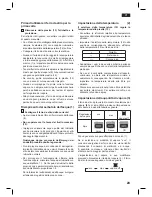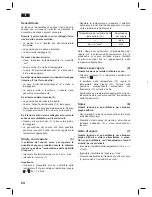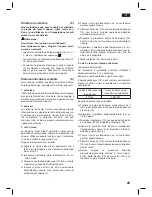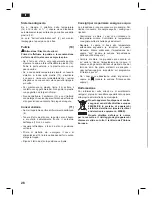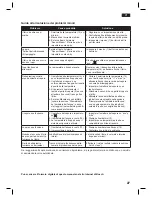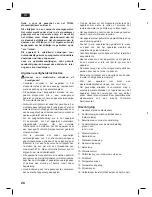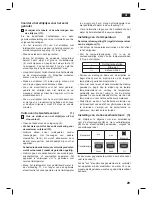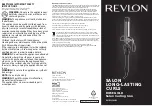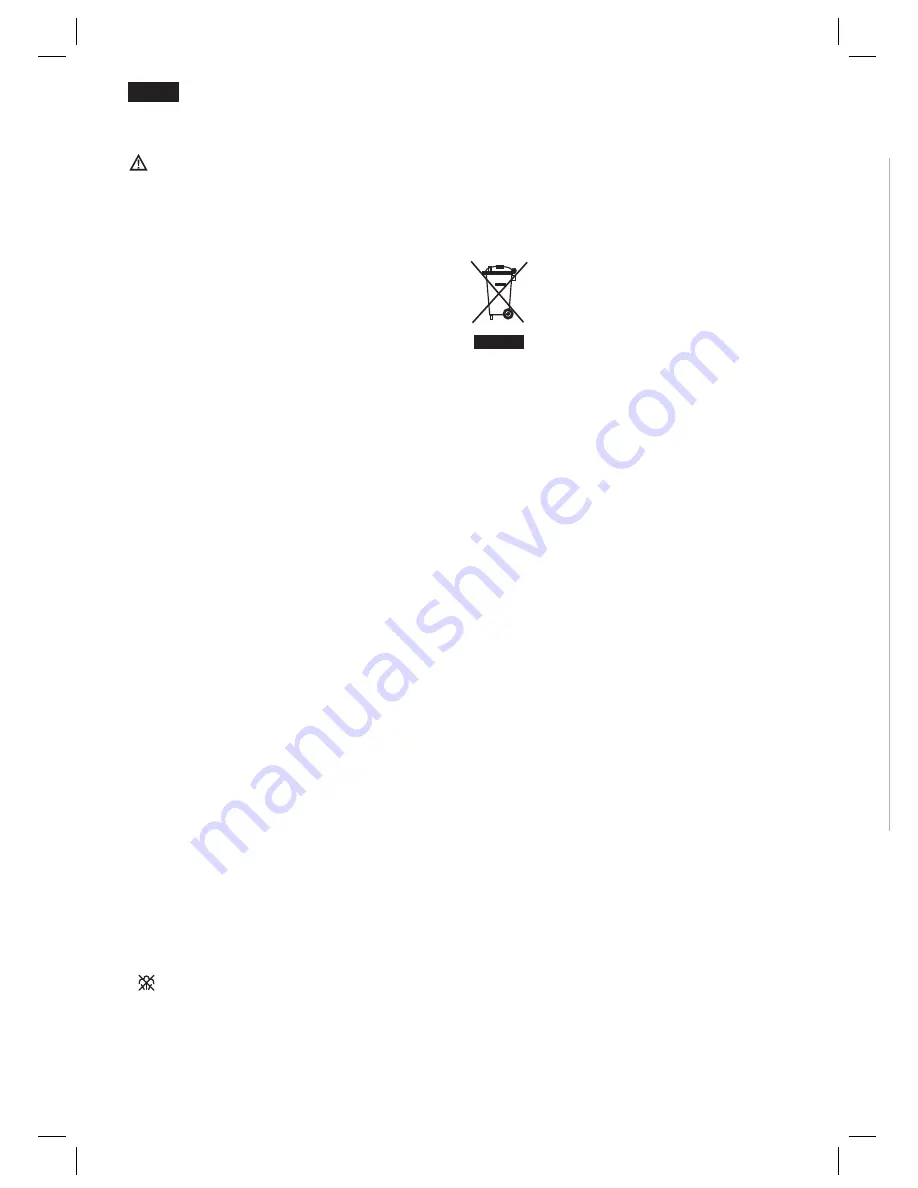
14
en
Cleaning
(10)
Attention ! Risk of burns !
Always unplug the appliance from the mains
supply before carrying out any cleaning or
maintenance operation on it.
• If the iron is only slightly soiled, pull out the plug
and allow the soleplate (12) to cool down. Wipe the
housing and the soleplate with a damp cotton cloth
only.
• If the cloth is synthetic, it may melt due to the high
temperature on the soleplate (12), switch off the
steam and rub off any residue immediately with a
thickly folded, dry cotton cloth.
• To keep the soleplate (12) smooth, you should
avoid hard contact with metal objects. Never use a
scouring pad, or chemicals to clean the soleplate.
• Never decalcify the tank (10) or treat it with
detergents or solvents, otherwise the iron will drip
water whilst steaming.
Storing
(11)
• Open the
fi
lling opening lid (8).
• Hold the iron with the front facing down and shake
it gently until the water tank (10) is empty.
• Set the iron aside in a vertical position to cool
down.
• Coil the power cable (15) loosely around the heel of
the iron, before storing.
• Store the iron in an upright position.
Tips to help saving energy and water
Steam production consumes the most energy. To help
minimise the energy used, follow the advice below:
• Start by ironing the fabrics that require the lowest
ironing temperature. Check the recommended
ironing temperature in the label on the garment.
• Regulate the steam according to the selected
ironing temperature, following the instructions in this
manual. Iron at “eco” steam setting (see “setting the
steam level” section).
• Try to iron the fabrics while they are still damp and
reduce the steam setting. Steam will be generated
from the fabrics rather than the iron. If you tumble
dry your fabrics before ironing them, set the tumble
drier on the ‘iron dry’ programme.
• If the fabrics are damp enough, set the steam to the
position (see “ironing without steam” section).
Y
Advice on disposal
Our goods come in optimised packaging. This
basically consists in using non-contaminating
materials which should be handed over to the local
waste disposal service as secondary raw materials.
Your local town council can give you information
about how to dispose of obsolete appliances.
This appliance is labelled in
accordance with European Directive
2002/96/EG concerning used electrical
and electronic appliances (waste
electrical and electronic equipment -
WEEE).
The guideline determines the framework for
the return and recycling of used appliances as
applicable throughout the EU.
Summary of Contents for SENSORSTEAM TDS12 SERIES
Page 2: ...16 1 2 5 6 7 8 9 10 11 12 15 14 3 4 13 ...
Page 114: ...SET SET SET SET 5 ...
Page 115: ...ar ...
Page 116: ...001 TDS12 06 11 de en fr it nl da no sv fi es pt el tr pl hu uk ru ro ar ...


